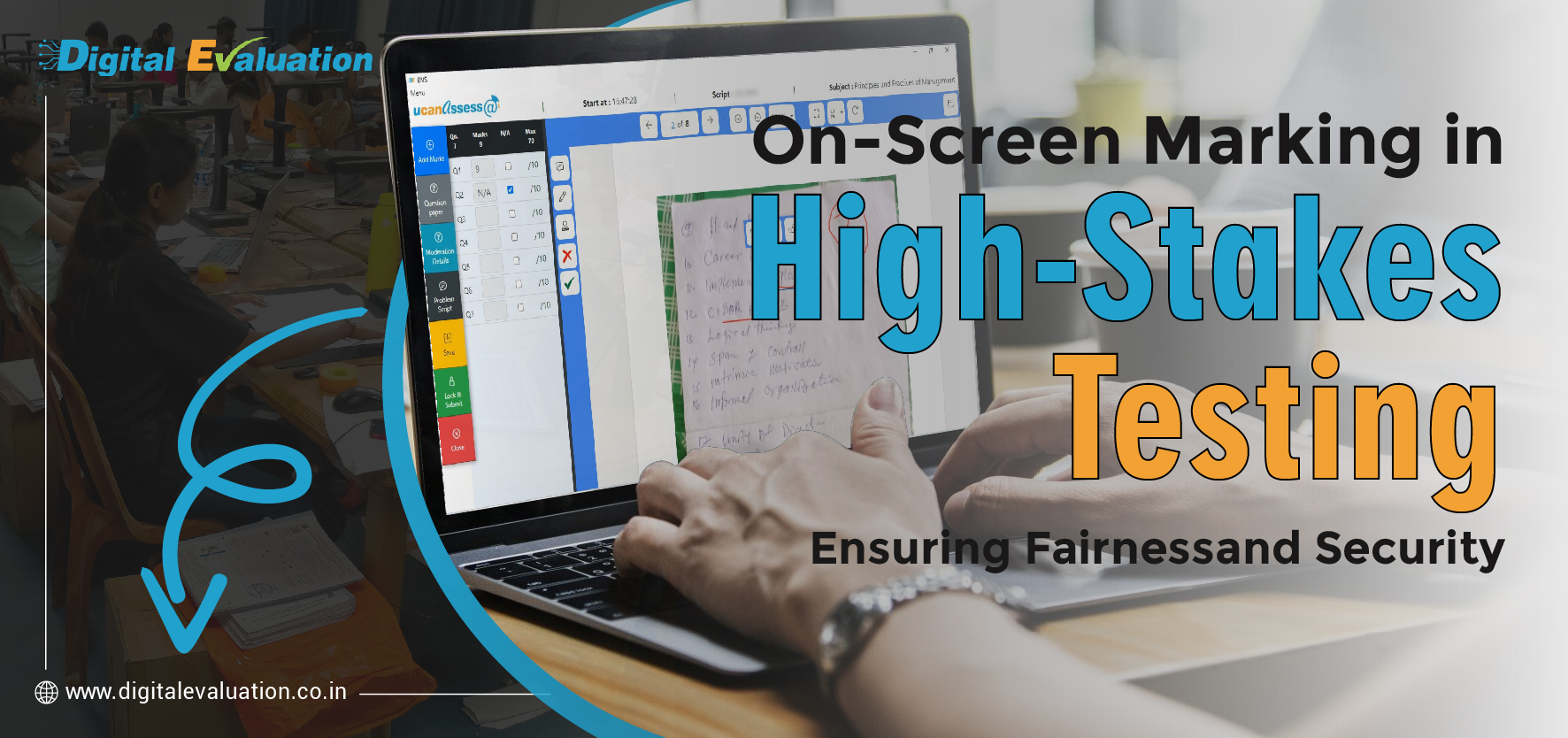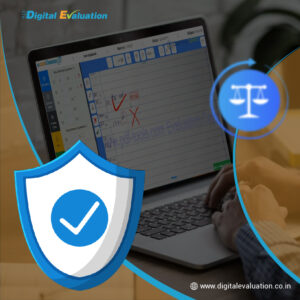
The landscape of educational assessment is undergoing a significant shift with the rise of digital evaluation. On-screen marking, the process of electronically grading exams and assessments, offers numerous advantages for high-stakes testing.
However, ensuring fairness and security in these high-pressure situations requires a strategic approach. Let’s explore this area and see its prospects.
Benefits of On-Screen Marking for High-Stakes Testing:
- Efficiency: On-screen marking eliminates the need for manual paper-based grading, saving time and resources for educators and administrators.
- Accuracy: Digital platforms can automate calculations and reduce the risk of human error in scoring.
- Data Richness: On-screen marking systems can generate detailed reports with item-level analysis, providing valuable insights into student performance and areas for improvement.
- Security and Standardization: Digital platforms offer robust security measures to protect student data and ensure consistent marking procedures across different examiners.
Securing Fairness in On-Screen Marking:
While on-screen marking offers numerous benefits, ensuring fairness is paramount, especially in high-stakes testing scenarios. Here are key considerations:
- Mitigating Bias:
Algorithmic bias in marking software can disadvantage students based on factors like language or writing style. Regular audits and adjustments are crucial to ensure unbiased marking criteria.
- Standardized Rubrics:
Developing and adhering to clear and consistent rubrics across all markers is essential for fair evaluation. On-screen platforms can facilitate these rubrics to provide a uniform approach.
- Human Oversight:
A combination of digital and human marking can provide a more robust assessment, particularly for subjective questions or complex responses. Random samples of electronically marked tests should be reviewed by human examiners to identify potential inconsistencies.
- Student Review:
Providing students with access to their marked assessments and the marking criteria promotes transparency and allows for potential appeals or re-marks.
Ensuring Security in High-Stakes Testing:
Security breaches in high-stakes testing can have devastating consequences for students. On-screen marking platforms must implement robust security measures to:
- Data Encryption:
Student data, answer sheets, and marking records should be encrypted to prevent unauthorized access.
- Access Controls:
Strict access controls with multi-factor authentication and user activity logs ensure that only authorized personnel can access sensitive testing information.
- Disaster Recovery Plans:
Disaster recovery plans are vital to ensure data integrity and system uptime even in the event of technical failures or cyberattacks.
The Role of Technology and Training:
Technology plays a crucial role in ensuring both fairness and security in on-screen marking.
- Advanced Marking Tools:
On-screen marking platforms should incorporate features like blind marking options and automated plagiarism detection to further minimize bias and cheating.
- Educator Training:
Educators who will be using on-screen marking platforms require comprehensive training on the system, potential biases, and security protocols. This empowers them to handle the technology effectively and identify any irregularities in the marking process.
Conclusion
On-screen marking holds immense potential for transforming the landscape of high-stakes testing. By prioritizing fairness, security, and leveraging technology to its fullest potential, educators and assessment bodies can ensure a more efficient, reliable, and equitable testing experience for all students.
As technology continues to evolve, on-screen marking systems will become ever more sophisticated, paving the way for a secure and fair future of high-stakes testing.



